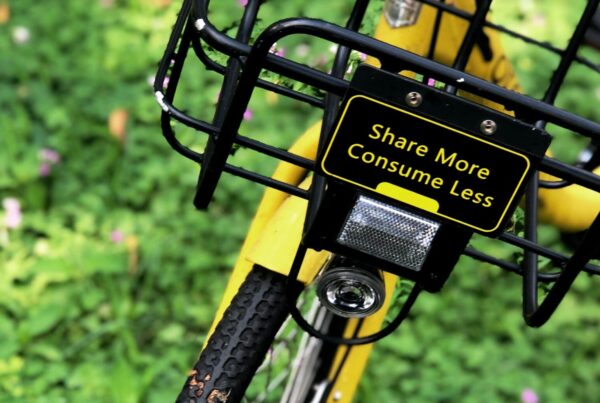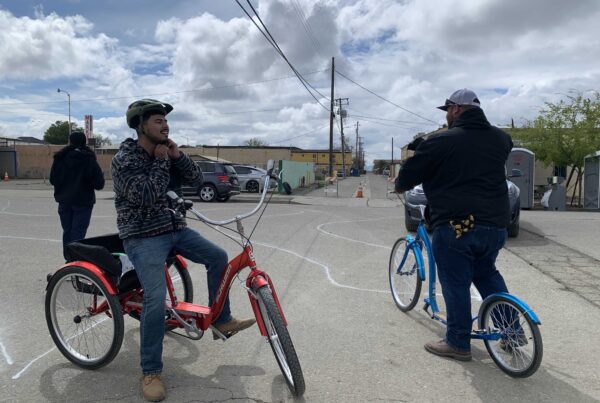Welcome to the Shared-Use Mobility Center’s weekly guide to the most impactful news, thought-provoking articles and innovative technologies that are shaping our transportation future. We believe in sharing information, just like sharing cars, bikes, and scooters, so if there’s anything additional you’d like to see, just drop us a line.
Announcements
Meet, Mingle, and Toast Mobility at SUMC’s NACTO reception.
The Shared-Use Mobility Center requests the pleasure of your company on Tuesday, September 10th from 6:00 pm – 8:00 pm for a fun post-NACTO happy hour at The Fifth Social Club in Toronto, sponsored by Populus and Bird. Complimentary beer, wine, and hors d’oeuvres will be served as you enjoy the chance to network with city leaders from across North America.
New Case Study in the MOD Learning Center:
A Google Transit Search of routes in Vermont for non-traditional rural transit users would often turn up empty. Thanks to the Go! Vermont Trip Planner, riders can now view alternate travel options which include both fixed and flexible public transit services. Go! Vermont! works on a computer or a smartphone and has increased trip-planning access from less than half of the geographical area of Vermont to nearly 100%.
View the Go Vermont! Case Study and learn how it works.
Ridehailing/Carsharing/Carpooling
Switch from Uber X to shared and you could be dropped off first. Uber’s new “Non-Stop Shared Ride” feature gives you ride credit so you get the desirable last seat in an Uber Pool.
RideOS is a new startup that wants to use open-source software to help anyone launch their own ridehailing platform, including ones with autonomous vehicles, and they have partnered with Voyage and HERE Technologies to make it happen.
Urban Land Institute offers a deep look into how cities are increasingly using carsharing programs to reduce parking for residential and commercial development in the US and how it has become a boon for shared mobility initiatives.
With internet access rapidly increasing around Cuba for the past several years, local entrepreneurs are taking a chance to bring ridehailing to Havana’s growing tech-savvy population with an app called Sube.
Partnerships and Programs
New Jersey is going all in on transit-oriented development with a slew of of mixed-use projects in the works to enhance quality of life and create better access to amenities.
Houston voters will have a chance this November to boost transit funding by $3.5 billion to ground a more multimodal metro region, which could include the result of another upcoming vote: better pedestrian and cycling infrastructure.
The Vermont Agency of Transportation has plans for a new transit program that will help residents in addiction recovery to have access to transportation around Rutland and the Northeast Kingdom, with help from the FTA.
A federal program called the Community Connect Grant wants to use $120 million over five years (from a new transportation bill) to restore neighborhoods that were split by the massive highway projects of “urban-renewal” of yore, potentially creating a streamlined fund to tear down old “highways to nowhere.”
Bikesharing and Micromobility
Equiticity founder Olatunji Oboi Reed dishes out his policy recommendations for Chicago’s Mayor Lightfoot on what can be done to ensure that the city’s mobility system, including dockless scooters on the West and Northwest sides, is “transformative, safe and secure for black and brown people.”
Now you’ll be seeing Limes, scooters that is, and their battery capacity, in more than 100 cities worldwide through Google Maps’ cycling and walking tabs when finding directions for short trips.
What can we do to make dockless scooters safer? Transportation advocate and Chicago columnist John Greenfield looks at the data around recent scooter injuries and how it shows the shortcomings (and potential safety fixes) of the new mobility poster child.
As San Antonio nears its choice to pick three vendors out of the six currently operating in the city, Bird and Lime’s independent contractors who charge scooters overnight for extra (or full-time) cash wonder: what will I do if they leave?
Transit
Pennsylvania Department of Transportation Secretary Leslie Richards sits down with Governing to discuss how she is trying to make waves towards more pedestrian and cyclist focus in the transportation sector and how PennDOT is creating more thoughtful transportation projects by understanding community impact.
Central Ohio Transit Authority ridership is booming after the agency launched a subsidized, unlimited-ride pass dubbed the C-pass, showing over 10% in growth for bus rides in one year.
Chicago’s River West neighborhood is starting to see more housing development in a move to catch up to the Northwest side’s more trendy Wicker Park and Logan Square areas. With Blue line improvements (which include adding more trains) still in the works, some wonder if it overcrowding will get worse before it gets better.
Bus-only lanes are a compelling alternative to high-cost rail projects in even moderately-dense areas. Watch how three buses filled with 210 people collectively fly past a whopping seven cars during a typical traffic crunch in a 7-second video. Good job LA Metro!
Technology
AUDIO: Dr. Johanna Zmud, the Senior Research Scientist at the Texas A&M Transportation Institute, sits down with the folks at the Mobility Podcast to weigh in on the factors that affect the social influence of autonomous vehiclesand how people may or may not come to accept the controversial and emerging technology.
Check out five myths about self-driving cars from the Washington Post that people just can’t shake, including how they will impact congestion, the environment, and our mobility habits.
Vancouver is expanding a pilot that uses artificial intelligence to improve predicted bus departures by 74%. This partnership is a collaborated effort with Microsoft and T4G, a software tech and analytics company.
Smart Columbus, Siemens Mobility, and Bytemark are teaming up to launch a trip-planning app that integrates “public and private mobility service to be paid using a single account-based payment system.”
Urban Sustainability
White flight, segregation, and a heavily racist past were major motivators in making Atlanta and the surrounding area highway, not transit, dependent. The fact that earlier this year, the predominantly white suburb of Gwinnett County still refused to join the region’s MARTA transit agency, says that this hateful legacy may not be in the past at all.
A new study shows that ridehailing trips contribute to rising congestion issues in many US metros but one quote from researchers puts this finding into perspective: “In total, approximately 2 to 3 percent of all VMT generated in Los Angeles County was generated by Lyft and Uber services in September 2018, while all other vehicle activity accounts for 97 to 98 percent of total VMT”.
Popular mid-century, the Thomas Guide was a 3,000-page atlas that mapped out 5,000 square miles of LA county. With its replacement by Google Maps and other navigation apps, Citylab asks if user-focused maps have made us egocentric wayfinders?
DC is ramping up its efforts to highlight sustainable transportation as a main metric for new real estate development with a set of new guidelines that confirm pedestrian safety and walkability in the evaluation process.
Requests for Proposals, Qualifications, or Information
RFP: Improving Access and Management of Transit ITS Data
TRB’s Transit Cooperative Research Program
Washington D.C.
Deadline: September 26, 2019
RFP: Accessible Mobility on Demand
Sound Transit
Seattle, Washington
Deadline: September 27, 2019
RFP: Transit District Development Opportunity
City of White Plains
White Plains, New York
Deadline: November 1, 2019
Did someone forward this to you? You can sign up for our newsletter here.




